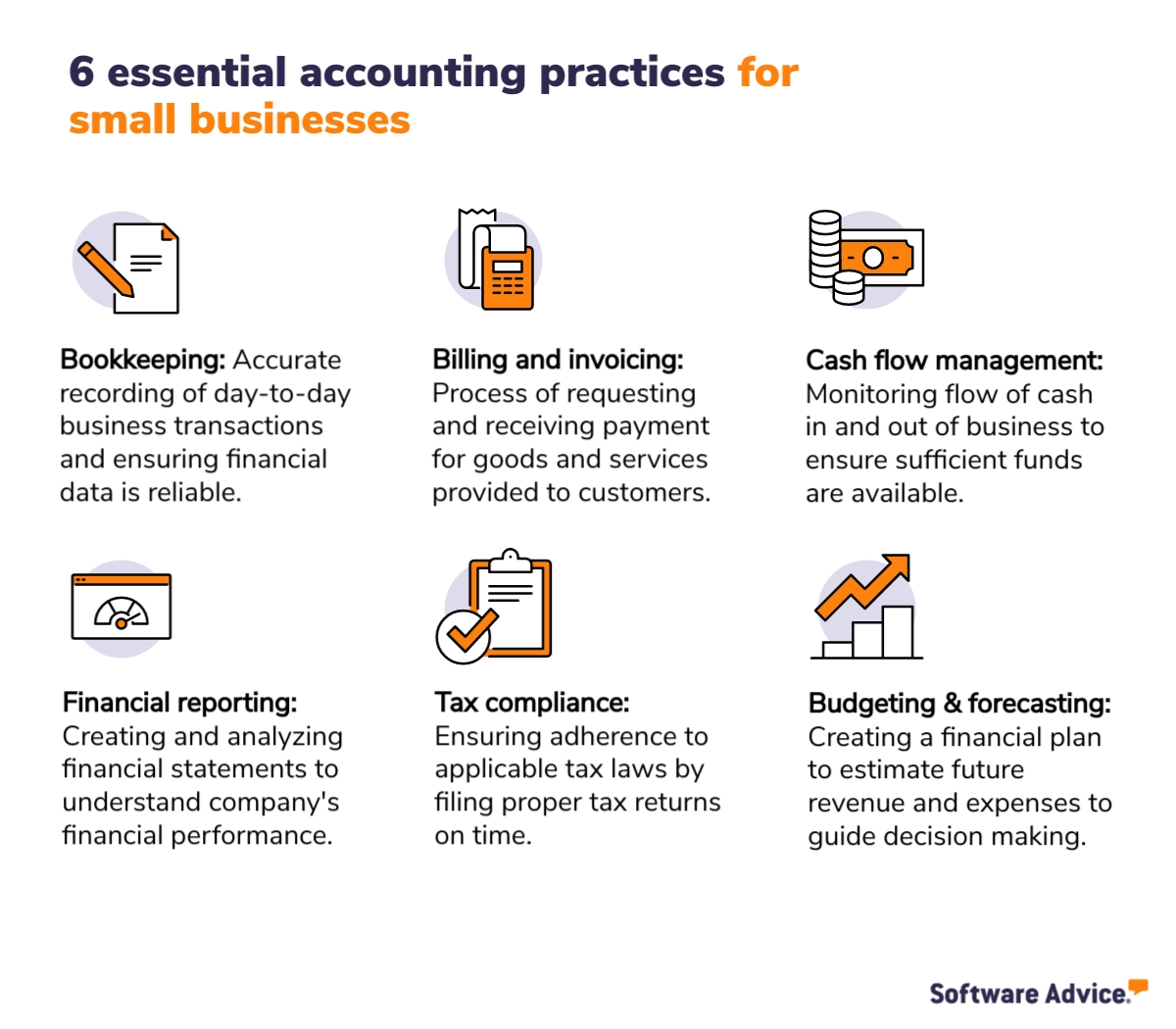
Small Business Accounting Basics: Your Essential Guide to Financial Success
Starting a small business is exhilarating. You’re fueled by passion, innovation, and a desire to make your mark. But amidst the excitement of creating products, serving customers, and building your brand, there’s one area that often feels daunting to new entrepreneurs: accounting.
The mere mention of "debits and credits," "balance sheets," or "tax forms" can send shivers down a budding business owner’s spine. However, understanding the fundamentals of small business accounting isn’t just about compliance; it’s about empowerment. It’s the language of your business’s health, growth, and long-term viability.
This comprehensive guide will demystify small business accounting, breaking down complex concepts into easy-to-understand language. Whether you’re a sole proprietor, a freelancer, or running a growing startup, mastering these basics will give you the confidence and control you need to make informed decisions and steer your business toward lasting success.
Why Small Business Accounting Isn’t Optional – It’s Essential
Think of accounting as the GPS for your business. Without it, you’re driving blind, unsure of where you’ve been, where you are, or where you’re going. Here’s why it’s not just a necessary evil, but a powerful tool:
- Legal Compliance: The most fundamental reason. Governments require businesses to keep accurate records for tax purposes. Failing to do so can lead to hefty fines, penalties, and even legal action.
- Informed Decision-Making: Good accounting provides real-time data on your financial performance. Are your prices right? Are certain expenses too high? Can you afford to hire new staff or invest in new equipment? Accurate records answer these critical questions.
- Tax Preparation Made Easy: When your books are organized throughout the year, tax season becomes a breeze, not a nightmare. You’ll have all the necessary information readily available, maximizing deductions and minimizing stress.
- Understanding Financial Health: Is your business profitable? Do you have enough cash to cover expenses? Are you carrying too much debt? Accounting answers these vital questions, giving you a clear picture of your company’s financial well-being.
- Securing Funding: If you ever need a loan, attract investors, or sell your business, robust financial records are non-negotiable. Lenders and investors rely on these documents to assess your risk and potential.
Key Accounting Terms Every Small Business Owner Should Know
Let’s start with the vocabulary. Don’t be intimidated; these are just simple ways to describe how money moves in and out of your business.
- Revenue (or Income): This is the money your business earns from selling goods or services.
- Example: If you sell a handmade necklace for $50, that’s $50 in revenue.
- Expenses: The costs your business incurs to operate. These are the things you spend money on to generate revenue.
- Examples: Rent, utilities, supplies, marketing, salaries, internet service.
- Profit (or Net Income): What’s left after you subtract your expenses from your revenue. This is the money your business truly "makes."
- Formula: Revenue – Expenses = Profit (or Loss, if expenses are higher).
- Assets: What your business owns. These are things of value that can generate future economic benefits.
- Examples: Cash in the bank, accounts receivable (money owed to you by customers), inventory, equipment, property.
- Liabilities: What your business owes to others. These are debts or obligations.
- Examples: Accounts payable (money you owe to suppliers), loans, credit card debt, unearned revenue (money received for services not yet delivered).
- Equity (or Owner’s Equity/Capital): The owner’s stake in the business. It’s what’s left for the owner if all assets were sold and all liabilities were paid off.
- Formula: Assets – Liabilities = Equity.
The Big Three: Essential Financial Statements
These are the "reports" that summarize your business’s financial activity. Think of them as your business’s report card, health check, and cash flow forecast.
1. The Income Statement (Profit & Loss Statement or P&L)
What it tells you: This statement shows your business’s financial performance over a specific period (e.g., a month, quarter, or year). It answers the question: "Did my business make a profit or a loss?"
Key components:
- Revenue: Total sales for the period.
- Cost of Goods Sold (COGS): The direct costs associated with producing the goods or services sold (e.g., raw materials, direct labor). Not all businesses have COGS (e.g., a service-based consultant).
- Gross Profit: Revenue – COGS. This shows how much profit you make from your core sales before operating expenses.
- Operating Expenses: All other costs of running the business (rent, marketing, salaries, utilities, etc.).
- Net Income (or Net Loss): Gross Profit – Operating Expenses. This is your bottom line – your profit or loss for the period.
Why it matters: The P&L helps you understand your profitability trends, identify areas where expenses might be too high, and evaluate the effectiveness of your sales strategies.
2. The Balance Sheet
What it tells you: This statement provides a "snapshot" of your business’s financial position at a specific point in time (e.g., December 31st). It answers the question: "What does my business own, what does it owe, and what is the owner’s stake?"
Key components:
- Assets: Categorized into Current Assets (can be converted to cash within a year, like cash, accounts receivable, inventory) and Non-Current Assets (long-term assets like equipment, property).
- Liabilities: Categorized into Current Liabilities (due within a year, like accounts payable, short-term loans) and Non-Current Liabilities (due in more than a year, like long-term loans).
- Equity: The owner’s capital in the business.
Why it matters: The Balance Sheet ensures that your assets equal your liabilities plus equity (the fundamental accounting equation: Assets = Liabilities + Equity). It helps you assess your business’s liquidity (ability to pay short-term debts) and solvency (ability to pay long-term debts).
3. The Cash Flow Statement
What it tells you: This statement tracks the actual cash coming into and going out of your business over a specific period. It answers the question: "Where did my cash come from, and where did it go?"
Key components (usually broken down into three activities):
- Operating Activities: Cash flows from your primary business operations (e.g., cash received from customers, cash paid to suppliers and employees).
- Investing Activities: Cash flows related to buying or selling long-term assets (e.g., purchasing equipment, selling property).
- Financing Activities: Cash flows related to debt, equity, and dividends (e.g., taking out a loan, repaying a loan, owner contributions/draws).
Why it matters: While the P&L shows profit, the Cash Flow Statement shows actual cash. A business can be profitable on paper but still run out of cash if it’s not collecting payments or managing expenses effectively. This statement is crucial for managing day-to-day liquidity.
Cash vs. Accrual Accounting: Which Method is Right for You?
One of the first decisions you’ll make is choosing an accounting method. The main difference lies in when you record revenues and expenses.
1. Cash Basis Accounting
- How it works: You record revenue when you receive the cash (even if the service was performed earlier) and expenses when you pay the cash (even if you incurred the expense earlier).
- Simplicity: It’s straightforward and intuitive, much like managing your personal bank account.
- Who uses it: Often used by very small businesses, freelancers, and sole proprietors, especially service-based ones. Many businesses with less than $27 million in average annual gross receipts (as of 2023) can use cash basis.
- Pros: Easy to understand and implement, provides a clear picture of your cash balance.
- Cons: Doesn’t always give an accurate picture of financial performance over time, as it doesn’t match revenues with the expenses that generated them. It might not accurately reflect money owed to you or by you.
2. Accrual Basis Accounting
- How it works: You record revenue when it’s earned (even if you haven’t received the cash yet) and expenses when they’re incurred (even if you haven’t paid the cash yet).
- Complexity: Requires a bit more tracking, as it involves concepts like "accounts receivable" (money owed to you) and "accounts payable" (money you owe).
- Who uses it: Most larger businesses, businesses that hold inventory, and businesses that need to present a more accurate financial picture. The IRS generally requires accrual accounting for businesses with inventory.
- Pros: Provides a more accurate picture of a business’s financial performance over a period by matching revenues and expenses. It’s the standard for generally accepted accounting principles (GAAP).
- Cons: Doesn’t directly track cash flow, so a business can look profitable on paper but still have cash flow problems.
Which to choose?
For most very small, service-based businesses, cash basis might be sufficient initially due to its simplicity. However, as your business grows, especially if you deal with inventory, credit sales, or want a more accurate financial picture, accrual basis is generally preferred and often required. Consult with an accountant to determine the best method for your specific business.
Setting Up Your Small Business Accounting System
Getting started doesn’t have to be overwhelming. Here’s a step-by-step approach:
1. Separate Business and Personal Finances
This is rule number one! Do not mix your personal bank accounts and credit cards with your business ones.
- Open a dedicated business bank account: Even if you’re a sole proprietor, this is crucial.
- Get a business credit card: For business expenses only.
- Why it matters:
- Clarity: Makes tracking business income and expenses infinitely easier.
- Legal Protection: If your business is structured as an LLC or Corporation, mixing funds can "pierce the corporate veil," exposing your personal assets to business liabilities.
- Tax Time: Simplifies tax preparation immensely.
2. Choose Your Accounting System
You have several options, depending on your budget, complexity, and comfort level.
- Manual (Spreadsheets):
- Pros: Free, full control.
- Cons: Time-consuming, prone to errors, lacks automation, difficult to generate complex reports.
- Best for: Very early-stage, extremely low-volume businesses, or as a temporary solution. Not recommended for long-term use.
- Accounting Software (Cloud-Based):
- Examples: QuickBooks Online, Xero, FreshBooks, Wave Accounting (free option).
- Pros: Automates data entry, generates reports instantly, integrates with bank accounts and other apps, provides professional invoicing, handles payroll, scalable.
- Cons: Monthly subscription fee, requires some setup and learning curve.
- Best for: Most small businesses. It saves time, reduces errors, and provides valuable insights.
- Hiring a Bookkeeper/Accountant:
- Pros: Expert management of your books, compliance, tax planning advice, frees up your time.
- Cons: Costly.
- Best for: Businesses with significant transaction volume, complex financial situations, or owners who prefer to delegate financial tasks entirely. (More on this later).
3. Set Up Your Chart of Accounts
This is a categorized list of all the accounts in your general ledger, used to organize your financial transactions. Think of it as a filing system for your money.
-
Typical Categories:
- Assets: Cash, Accounts Receivable, Inventory, Equipment, Vehicles
- Liabilities: Accounts Payable, Loans, Credit Card Debt
- Equity: Owner’s Capital, Retained Earnings
- Revenue: Sales, Service Income, Interest Income
- Expenses: Rent, Utilities, Office Supplies, Marketing, Salaries, Travel, Professional Fees
-
Why it matters: A well-organized chart of accounts ensures that every transaction is recorded consistently, making it easier to track specific types of income and expenses, and generate accurate financial reports. Most accounting software comes with a standard chart of accounts that you can customize.
Essential Day-to-Day Accounting Tasks
Once your system is set up, here’s a look at the ongoing tasks you’ll need to manage:
1. Recording All Transactions
Every penny that comes in and goes out of your business needs to be recorded.
- Income: Record all sales, service fees, interest earned, etc.
- Expenses: Record every purchase, bill paid, salary, etc.
- Documentation: Keep receipts, invoices, and bank statements. Digital copies are often best. Accounting software can often pull transactions directly from your bank, making this much easier.
2. Invoicing and Accounts Receivable Management
If your customers don’t pay immediately, you’ll need to send invoices and track who owes you money.
- Create Professional Invoices: Include your business name, contact info, customer info, itemized services/products, date, invoice number, due date, and payment terms.
- Send Timely Invoices: Don’t delay.
- Track Accounts Receivable: Keep a close eye on outstanding invoices. Follow up promptly on overdue payments.
3. Paying Bills and Accounts Payable Management
Just as you need to collect money, you need to pay your own bills.
- Track Accounts Payable: Keep a record of all bills you owe and their due dates.
- Pay Bills on Time: Avoid late fees and maintain good vendor relationships.
- Automate Payments: Set up recurring payments for fixed expenses like rent or subscriptions where possible.
4. Payroll (If You Have Employees)
If you hire employees, payroll adds another layer of complexity.
- Calculate Wages: Track hours worked and calculate gross pay.
- Withhold Taxes: Deduct federal, state, and local income taxes, Social Security, and Medicare (FICA).
- Pay Employer Taxes: Pay your share of FICA, unemployment taxes, etc.
- File Payroll Tax Forms: Submit forms like Form 941 (quarterly) and W-2s (annually).
- Consider a Payroll Service: This is one area where investing in a dedicated payroll service (like Gusto, ADP, or QuickBooks Payroll) can save you immense headaches and ensure compliance.
5. Bank Reconciliation
This is a critical monthly task that ensures your records match your bank’s records.
- Process: Compare your bank statement to your accounting software/spreadsheet.
- Purpose: Identify discrepancies like unrecorded transactions, bank errors, or outstanding checks.
- Why it matters: It catches errors, helps prevent fraud, and ensures your cash balance is accurate. Do not skip this!
Understanding Your Tax Obligations
Taxes are a significant part of running a business. While a full tax guide is beyond this article, here are the main types of taxes you’ll encounter:
- Income Tax: Based on your business’s net profit. How it’s paid depends on your business structure (sole proprietor, LLC, S-Corp, C-Corp). Many small businesses pay estimated quarterly taxes throughout the year.
- Self-Employment Tax: If you’re a sole proprietor or partner, you’ll pay self-employment tax (Social Security and Medicare contributions) in addition to income tax.
- Payroll Taxes: If you have employees, you’re responsible for withholding taxes from their paychecks and paying employer contributions.
- Sales Tax: If you sell taxable goods or services, you may need to collect sales tax from customers and remit it to your state and/or local government. Rules vary widely by location and product/service.
- Property Tax: If your business owns real estate or certain types of personal property.
- Excise Tax: Taxes on specific goods or services (e.g., fuel, tobacco, specific manufacturing).
Key takeaway: Keep meticulous records of all income and expenses, as these are crucial for calculating your tax liability and claiming eligible deductions. Consider consulting a tax professional early on.
When to Hire a Professional: Bookkeepers vs. Accountants
You don’t have to do it all yourself forever. Knowing when and who to hire can be a game-changer.
Bookkeeper
- Role: Primarily handles the day-to-day recording of financial transactions. They manage your books, categorize income and expenses, reconcile bank accounts, and prepare basic financial reports.
- Focus: Historical data entry and organization.
- When to hire: When your transaction volume becomes too high for you to manage efficiently, or you’d rather spend your time on core business activities.
Accountant (or CPA – Certified Public Accountant)
- Role: Provides higher-level financial analysis, tax planning, auditing, and strategic advice. They can interpret your financial statements, advise on business structure, help with complex tax situations, and ensure compliance.
- Focus: Analysis, strategy, tax planning, and compliance.
- When to hire: For tax preparation and advice, business planning, financial forecasting, navigating complex financial decisions, or if you need certified financial statements for loans or investors.
Many small businesses work with both: a bookkeeper for day-to-day record-keeping and an accountant for annual tax filing and strategic financial guidance.
Top Tips for Small Business Accounting Success
- Be Consistent: Don’t let transactions pile up. Dedicate specific time each week (or even daily for busy businesses) to record income and expenses. Consistency prevents overwhelming backlogs.
- Go Digital: Embrace accounting software. It automates tasks, reduces errors, provides real-time data, and makes collaboration with bookkeepers/accountants much easier.
- Keep Meticulous Records: Scan and save all receipts, invoices, and bank statements. Cloud storage makes this easy and ensures you always have access.
- Understand Your Reports: Don’t just generate the P&L and Balance Sheet; take the time to read and understand them. They tell the story of your business.
- Separate Business and Personal Finances (Again!): This cannot be stressed enough. It simplifies everything.
- Don’t Be Afraid to Ask for Help: If you’re stuck, confused, or simply overwhelmed, reach out to an accountant or bookkeeper. It’s an investment that often pays for itself in saved time, reduced errors, and better financial decisions.
- Review Regularly: Don’t wait until year-end. Review your financial statements monthly or quarterly to catch issues early and make timely adjustments.
- Educate Yourself Continually: The more you understand about your business’s finances, the more confident and successful you’ll be.
Conclusion: Empowering Your Business with Financial Clarity
Small business accounting might seem like a maze of numbers and regulations, but at its heart, it’s simply about understanding your money. By embracing these basics, you’re not just fulfilling legal obligations; you’re gaining invaluable insights into your business’s performance, profitability, and potential.
Invest the time now to set up a robust system, understand your financial reports, and stay consistent with your record-keeping. It will not only simplify tax season but also empower you to make smarter, more strategic decisions that drive sustainable growth and turn your entrepreneurial dreams into a thriving reality. Your financial clarity is your business’s superpower – wield it wisely!



Post Comment